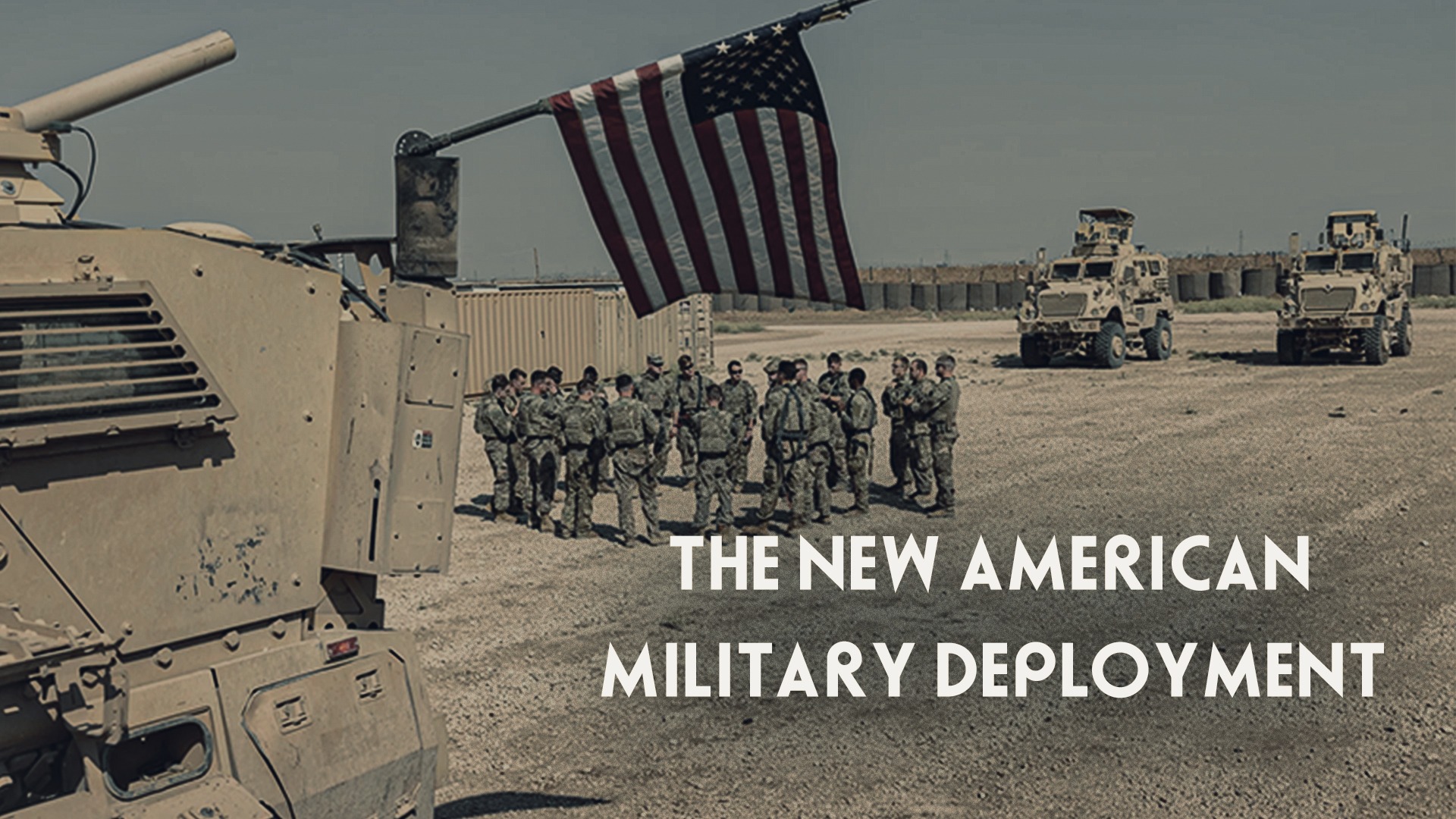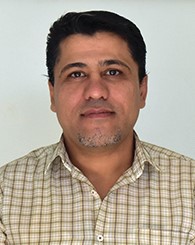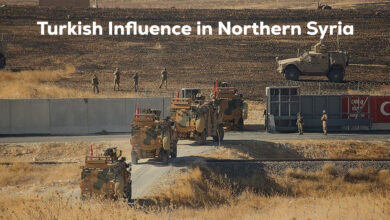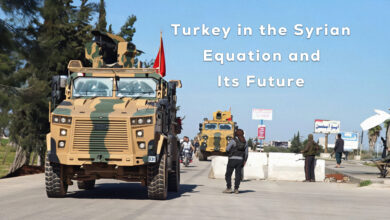Military movements in Syria and the new American military deployment


The Syrian arena still includes local and foreign military forces, even after the fall of the Assad regime, each with its own goals, ambitions, and projects. Despite the political and military changes in the region that have altered many of the political and military equations that prevailed during the former regime, the United States of America remains the dominant power politically and militarily. Some regional and international countries monitor American military movements in Syria (considering it the force that stands as a barrier to their ambitions) to implement their agendas in the areas of the Autonomous Administration in particular and Syria in general. As soon as they hear that the United States is carrying out military movements such as changing its locations, reducing its forces, or even withdrawing, they issue statements hostile to the region and threaten military intervention under the pretext of what they call their national security against anyone who tries to undermine the unity of Syrian territory or change the form of the central regime, and to legitimize their military intervention, they state that they are ready to cooperate militarily with the Syrian interim regime to confront these threats.
After the geographical elimination of ISIS, the end of the Iranian role in Syria, and the fall of the Assad regime, is there justification for the United States to withdraw militarily from Syria, or are its recent movements merely tactical movements in line with the current situation in Syria and the region, or are they movements for specific strategic goals?
From the standpoint of the legitimacy of its military presence, the United States has no problem in Syria, which some regional and international countries rely on in order to withdraw its forces from Syria, as long as it is within the international coalition, and this coalition operates under its leadership, it is like an international mandate for its military presence in the region. However, the future of the American military presence is generally unclear and can be linked to several internal and external factors, including military and political developments in Syria after the fall of the former Assad regime, regional and international positions and intentions in Syria, as well as strategic priorities for the United States in Syria and the region.
The Syrian military map has become somewhat complicated after the fall of the Assad regime and the establishment of a new Syrian army that includes foreign fighters who have been naturalized by the new authority, and the refusal of local factions and forces to join it for many reasons related to a regional agenda or in the structure of the new Syrian army and its role, and related to the problem of disagreement over the form of government in Syria.
The New Syrian Regime
After the fall of the defunct Assad regime and the control of Hay’at Tahrir al-Sham (HTS) over power, a transitional government was formed under the leadership of Ahmed al-Sharaa. However, the United States of America informed the Syrian mission in New York, through its permanent mission to the United Nations, with an official memorandum stipulating the change of its legal status from a permanent mission of a member state to the United Nations to a mission representing a government not recognized by Washington. This decision is a very important political and diplomatic development, as it reflects a more severe stance towards the interim Syrian government that came after the fall of the Assad regime. However, it granted exceptions to some figures in the interim Syrian government to represent Syria in some international meetings. Also, Israel still does not recognize the Syrian authority and describes it as terrorism. Also, fighting the components of the Syrian people and refusing to represent them in the transitional Syrian government and preventing them from participating in building the future of Syria, despite international calls demanding the transitional government to protect them and preserve their rights, makes Syria unstable and heading into a dark tunnel.
The interim government in Syria may not pose any real threat to the United States and Israel. However, the presence of extremist elements who do not hold Syrian citizenship and hold military positions in what is called the New Syrian Army, and the radical Islam that has found fertile ground in Syria, and the emergence of sporadic demonstrations – even if small – calling for jihad, is an indicator of the growing radical Islamic thought, which is a real threat factor to the United States of America and Israel.
This means new military arrangements that are in line with the political and military situation in Syria, especially with the presence of local and foreign military forces.
Local military forces
The New Syrian Army, which was established by the new authority in Damascus, is trying to extend its control over all Syrian territory, and includes in its ranks foreign elements who were naturalized by the new regime on the pretext that they fought the defunct regime. Also, some factions under its banner are accused of committing massacres against the Alawite component on the coastal region, which raised major questions about the patriotism of the Syrian army, and fears among the United States of America and Israel. It also refuses any military formations outside its administration, even if they wish to join the New Syrian Army according to a new vision on the structure of the Syrian army.
As for what is called the Syrian National Army “Turkey’s mercenaries,” most of its factions refuse to integrate into the New Syrian Army for purposes that may be related to quotas, a part has joined the New Syrian Army, and they all work according to the Turkish agenda and are considered Turkey’s military arm to implement its plans in Syria, whether in the occupied northern Syria or to fight the Syrian Democratic Forces, or within the New Syrian Army.
The Free Syrian Army, which was formed by the international coalition in al-Tanf region, which is now expanding in the Syrian desert to al-Dumayr in northeastern Damascus, to spread security and stability in Palmyra and al-Dumayr after the fall of the defunct regime.
The Syrian Democratic Forces (SDF) are the largest military force in Syria, the most organized, and the most reliable in combating terrorism. They are a partner of the international coalition to fight ISIS and the military force in the Autonomous Administration areas of North and East Syria. They have a military vision that is commensurate with the existing situation in Syria: “building a new structure for the Syrian army,” which has put them in confrontation with Turkey, which rejects any change in the shape of the new Syrian army.
Alongside new factions such as the “Military Council of Suwayda” and the “Men of Dignity Movement” that are being formed or updated in the Suwayda region, they do not have a clear vision of the form of the regime in Syria or even of their tasks as a quasi-independent force or one affiliated with the new Syrian army.
Despite the near-complete cessation of military operations, especially between the Syrian Democratic Forces and Turkish mercenaries on the Tishreen Dam axis and throughout Syria, the possibility of internal conflict remains as long as these factions do not have unified national visions to end the Syrian crisis and build a new Syria, and they move according to a foreign agenda.
Foreign Military Presence in Syria
There are effective foreign forces in Syria, including “Russian forces, Turkish occupation forces, American forces, and coalition forces.” The fall of Assad has affected the balance of power; after the Russian forces were in control, they are now confined to their military bases: “Hmeimim Air Base, Tartus Naval Base, and a military point at Qamishli Airport.”
Military movements in Syria are in line with the political and military changes taking place in Syria in particular and the Middle East region in general, and according to the strategy of each country.
Russian forces played a major role in consolidating the Assad regime and were a key player in the Syrian crisis. However, the fall of its ally Assad has undermined the Russian movement in Syria, and it has become largely confined to its military bases as a result of the cessation of the agreements signed between Russia and the defunct regime by the authorities of the new regime in Damascus, and the fate of its military bases in Syria and its role in the future of Syria. Despite this, Russia is trying to restore its position, so it exploits the conditions in the coastal region by expanding in the region and increasing its movements there, in addition to the existence of undeclared military understandings with the United States.
As for Turkey, “the ally of the United States,” it is no less dangerous than Iran and its Shiite project in Syria, but it may surpass it in some aspects. It has an Ottoman project with a Brotherhood character in Syria and has aggressive plans towards the Syrian components and towards the areas of the Autonomous Administration and the Syrian Democratic Forces. Despite the decline of its Brotherhood project in the occupied Syrian north, the fall of the Assad regime and the control of Hay’at Tahrir al-Sham over power in Damascus has revived its ambitions over the entire Syrian territory, as Syria has become, in its view, an open arena for its ambitions, as if it were a Turkish state, which may pose a threat to Israel’s security, especially since Turkey has strong relations with radical Islam. The attempt to establish a military base for it in the Syrian interior, “Palmyra,” is a clear indication of Turkey’s intentions in Syria, and Israel’s bombing of the sites visited by the Turkish military delegation to establish military bases there is evidence of Israel’s fears of Turkish expansion in Syria, and evidence that Israel will not allow its national security to be threatened by any party, even if it is an ally. Therefore, Turkey is working to consolidate its presence more in the occupied Syrian north and expand further, as the Turkish occupation state has taken control of Menagh military airport, and is looking forward to expanding in the Syrian coast for political and economic purposes. Its attempts did not stop at establishing a base for it in the Syrian interior, but it is trying to introduce the S400 system into Syria, which means imposing a no-fly zone on the northern Syrian regions, separating them from Syria, and annexing them to Turkish territory if it is allowed, meaning that Turkey has begun to work to divide Syria.
As for the Israeli military movement, Israel has been able to exploit the political and military conditions in Syria; it has controlled the buffer zone, Quneitra countryside, and Mount Hermon, and has established a buffer zone under the pretext of protecting its national security from radical groups. Its presence in southwestern Syria appears to be a long-term strategic positioning. Israel is closely monitoring the military movements of the new regime in Syria, preventing the return of Iranian influence to Syria, and Israel has genuine concerns about Turkish Ottoman expansion in Syria, which threatens its national security.
Therefore, the Syrian arena remains an arena of indirect conflict between these military forces present in Syria, as a result of conflicting ambitions and goals, especially between the new Israeli role and Turkish ambitions in Syria. This may lead, as a transitional stage, to the distribution of areas of influence in Syria or to the determination of red lines between those forces; in order to reduce escalation and avoid a potential military conflict between them, especially between the United States allies (Israel and Turkey).
American military presence in Syria
The American military presence in Syria, which dates back to 2014 after the emergence of ISIS and its expansion in Syria and Iraq, and until today, which included movements and partial withdrawals in 2019, was linked to two axes:
The first axis: Eliminating ISIS and preventing it from returning, and here the United States is linked to its partnership with the Syrian Democratic Forces as a ground force with great capabilities capable of confronting terrorism, and it has proven itself in its wars with ISIS and its defeat through its great coordination with the international coalition, and this task and this coordination are still continuing in striking ISIS cells and its leaders present in Syria who have spread in the Syrian interior after Hay’at Tahrir al-Sham took control of power in Damascus.
The second axis: Related to Iranian expansion in Syria, which is linked to Israeli national security, as Iranian expansion in Syria during the era of the late Assad regime posed a major threat to American military bases in eastern Euphrates, and also threatens Israeli national security despite the Israeli strikes on Iranian military sites, warehouses and weapons factories in Syria.
The fall of Assad, the end of Iranian influence in Syria, Syria’s exit from being an ally of Iran, the end of what is called the axis of resistance and defiance, and the undermining of the Russian military presence in Syria, have created new equations in the Syrian arena, and have new arrangements related to the new regime and its radical Islamic background, foreign fighters, Turkish ambitions to control Syria, Israeli national security, and its new role.
Despite the geographical elimination of ISIS, the organization’s cells are still active in the region; in this case, it still poses a real threat, and the possibility of its return still exists in the absence of an integrated military force in Syria (with the exception of the Syrian Democratic Forces, which operate in its areas, and some joint operations in the Syrian interior) working to fight terrorist organizations; and the refusal of the coalition countries to the request of the new regime in Syria for the new Syrian army to join the international coalition to fight ISIS, except for the international coalition’s lack of confidence in this army, especially after the foreign fighters joined its ranks and granted them Syrian citizenship. As for Iran, despite the end of its actual presence in Syria, it has the capabilities that allow it to return to Syria through the tribes associated with it or through its Shiite base in Syria. Therefore, the danger in Syria remains and cannot be ignored once military operations in it end.
As for the military movements of the American forces, which are closely monitored by regional and international countries in Syria, and their desire to reduce the number of their forces in the region and reduce their presence in the eastern countryside of Deir ez-Zor or even withdraw from Syria based on the decision of the American Congress to withdraw from Syria in the summer of 2026, it may be natural according to the course of the military reality in Syria, and may be related to Trump’s foreign policy; from this point of view, American movements can be classified into tactical and strategic ones:
Tactical moves: These American military moves, repositioning, and reducing the number of its forces, may come after a near-complete cessation of military operations in the Tishreen Dam area and the construction of a base near the dam area. It may be a base to monitor the cessation of military operations between the Syrian Democratic Forces and Turkey’s mercenaries, and it may be related to the decrease in the rate of military operations throughout Syria. Moreover, the American military presence in Syria has created a kind of military balance in Syria, and it is considered a safety valve for Israel against anyone who tries to threaten its national security, or to prevent a conflict between allied forces, after Turkey’s attempts to build a military base in the depths of Syria “Palmyra” and the resulting major differences between Turkey and Israel.
Strategic moves: They are linked to Trump’s foreign policy of reducing expenditures and imposing peace through force, and focusing on the major Chinese threat that threatens its global position; which may push Trump to reduce American forces in the Middle East in general and focus on the Pacific region and Southeast Asian countries (allies and partners of the United States), and give Israel the opportunity to take over the Middle East file from the Syrian gate; as the United States is working to open up more space for Israel to take over the Syrian file, especially after the emergence of the Israeli role in the region after October 7; American military moves are commensurate with Israel’s strength in Syria, in addition to Israel’s strategy of being the first regional power in the Middle East, which Benjamin Netanyahu stated: “I have said repeatedly that we will change the face of the Middle East, and this is what we are actually implementing now.” Therefore, there must be a Middle Eastern force capable of protecting the strategic interests of the United States in the region, and Israel is the United States’ agent, and this role may increase after full Arab normalization with Israel, and the establishment of an Arab-Israeli-American alliance in the region cannot be ruled out; which may limit the expansionist aspirations of some regional countries.
The great American political and military role in Syria cannot be overlooked, whether in reducing military operations in Syria, or forming an obstacle to Turkish expansionist plans in Syria, but its military presence comes primarily to protect its strategy in the region and to protect Israel’s security. Therefore, from this standpoint, its military moves come by evacuating some bases, establishing new bases, or reducing the number of its forces. Therefore, the issue of its remaining, whether by changing its military positioning, reducing the number of its forces, or even withdrawing from Syria, is linked to its Middle Eastern strategy, its strategy in confronting the Chinese threat, and the Israeli role in Syria.
Therefore, American policy, which is based on imposing peace through force, may depend on giving its allies and partners greater space to carry out the tasks that were on the shoulders of the United States, and in return, they will be under its protection and not abandon them “rebuilding trust to its allies and partners,” which is what happened when Trump tried to withdraw his forces from Syria and abandon Qasd (SDF); which put them in an unfair confrontation against the Turkish army, where the Syrian Democratic Forces lost the areas of Gire Sipi and Sere Kaniye before Trump reversed his decision and announced that he would retain part of his forces in Syria, to the withdrawal from Afghanistan and the abandonment of his ally, or even in Ukraine; which led to a shake in confidence between the United States and its allies. The mistakes that were made in the past and affected the position of the United States among its allies and partners, and which primarily served its enemies, may not be repeated, and the United States may work during the Trump administration to protect and strengthen them in exchange for carrying out the tasks assigned to them, including the Syrian Democratic Forces as a force that prevents the return of ISIS to the region. Therefore, reducing its forces in Syria or even withdrawing its forces completely will not change the equation anything; because it will be in direct coordination and support with it “the international coalition” and under its protection from Turkish threats, and we may witness a peace process between the Syrian Democratic Forces and Turkey under American auspices.
Although there are some strategic and tactical goals for the presence of its forces in eastern Euphrates and the Syrian Tanf region (such as fighting terrorism and not allowing ISIS to return again, preventing the return of Iranian influence after the fall of the Assad regime, protecting Israel’s security and supporting its role in Syria, or even protecting its partners in the region), but despite this, its military presence in Syria remains a complex and controversial issue that cannot be predicted in the future under the Trump administration and its foreign policy.




